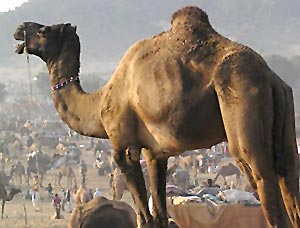 Destruction of Supply of Stores, as mentioned in chapter IV of book XII in Arthashastra, is one of the steps which a weak king can take against the powerful enemy when he can destroy his sources of supply for food grains as well as other items which are kept in the store of the enemy. Arthashastra mentions that the traitors, enemies, and wild tribes employed for the purpose, may destroy the enemy`s rear or obstruct his reinforcement; or the spies who are concealed in the forest regions, may enter into the border area of the enemy`s country and devastate it; or they may destroy the enemy`s supply, stores and other things when those things are being conveyed on a narrow path passable by a single man.
Destruction of Supply of Stores, as mentioned in chapter IV of book XII in Arthashastra, is one of the steps which a weak king can take against the powerful enemy when he can destroy his sources of supply for food grains as well as other items which are kept in the store of the enemy. Arthashastra mentions that the traitors, enemies, and wild tribes employed for the purpose, may destroy the enemy`s rear or obstruct his reinforcement; or the spies who are concealed in the forest regions, may enter into the border area of the enemy`s country and devastate it; or they may destroy the enemy`s supply, stores and other things when those things are being conveyed on a narrow path passable by a single man.
Destruction of Supply of Stores also includes the role of the spies in devastating the supplies of the enemy. The spies who are in the guise of herdsmen can leave the herds of cattle, sheep and goats for a longer time to divert the attention of the enemy from attack; they can even harm the cattle of the enemy with more ferocious animals; spies as hunters may let off cruel beasts from traps, spies as snake charmers may let off highly poisonous snakes and those who carry the responsibility of elephants may let off elephants who are totally out off control, near the enemy`s camps. The spies who are in guise of cowherds may let off such animals which are of ferocious among the horses, mules, camels, buffaloes and other beasts after having smeared the eyes of those animals with the blood of high musk rat (chuchundari). The spies who live and work with the use of fire may set fire to the camps of the chief and slay the chiefs of infantry, cavalry and chariots and bring them to an end.
Destruction of Supply of Stores further mentions that the traitors according to their preconcerted plan can declare a night-battle and enter the capital of the enemy king and blow a trumpet and declare the capital has been captured .After entering into the king`s palace, he may kill the king in tumult, when the king moves from one direction to another; the Mlechchhas, wild tribes as well as the chief of the army, lying in the ambush or concealed on the fence of the kingdom may slay the king, the hunters can also slay the king when he comes in his direction or may declare a treacherous war against the king . The weak king can occupy the area when in a favourable area and slay his enemy when he passes through single path or from mountain path or near a tree or branches of a banyan tree or in water when he crosses a river. The weak king can also cause them destruction by causing destruction of dams, or the lakes and ponds and cause him destruction either with the help of explosive fire or poisonous snakes etc.
Thus, with the Destruction of Supply of Stores Kautilya specifies that the powerful enemy should be caught in such places to which he is either confined or from which he is trying to escape. With these steps he shall be able to destroy the powerful enemy with internal disturbances which shall defeat him in the battlefield without actually fighting the war.



















